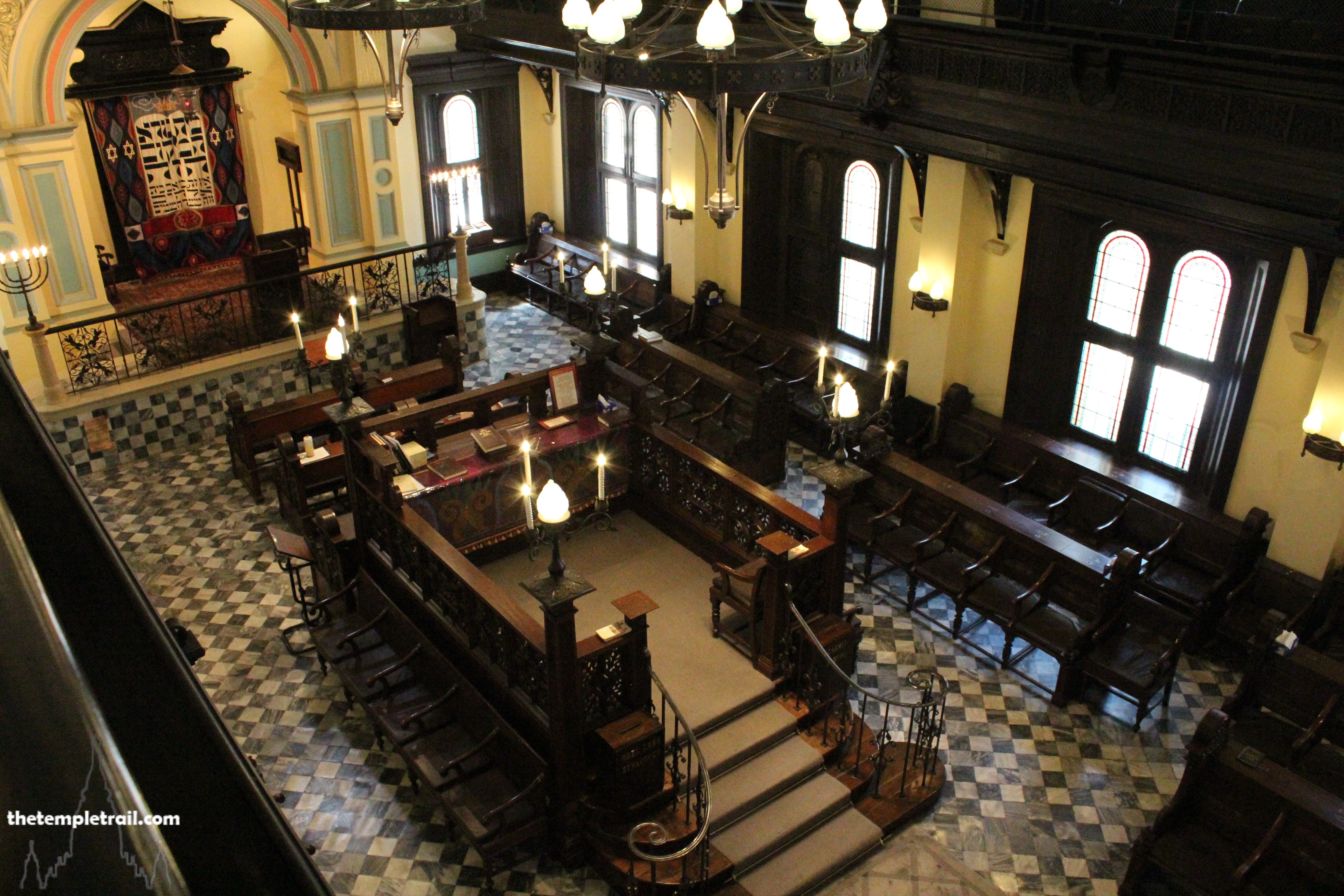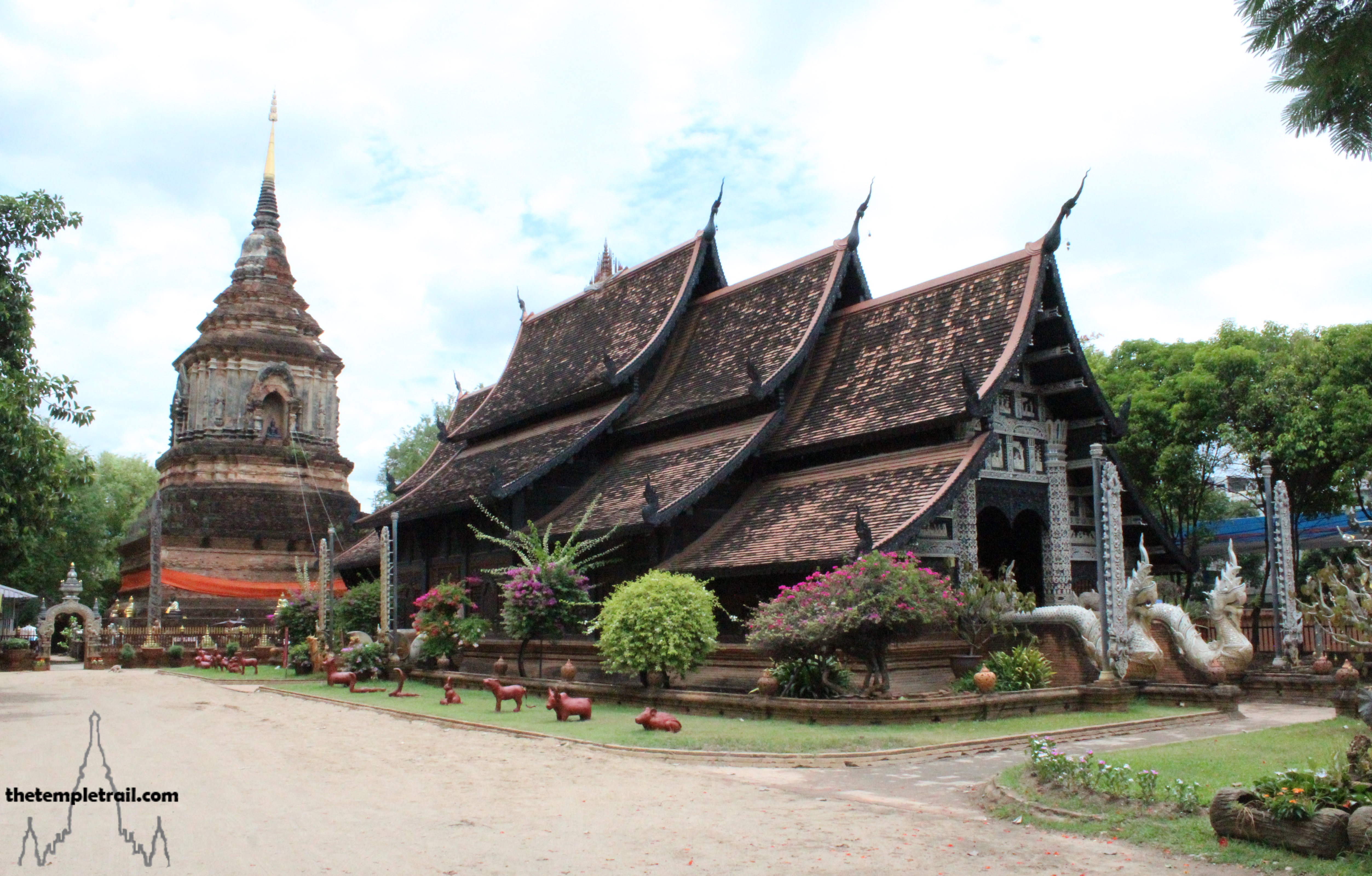Slogging up the steep streets from Hong Kong’s Central District, you begin to ascend the hills up to the Mid-levels. The old roads, built in a time before cars are narrow and as taxis pass, you feel the rushing of air from their rapid passage. The streets occasionally become pedestrian and steps replace the tarmac. The climb is sweat inducing in the humid swelter. Finally, coming to level ground, you trace Robinson Road until you come to the Jewish Community Centre. The tall building is the gateway to your intended destination. After passing through the security station, manned by Gurkhas from Nepal, you enter the lobby and descend to the original ground level, a few floors lower than the level of the Community Centre. You exit out into the sunlight and immediately encounter a building with different architecture. This is Ohel Leah, the beautiful synagogue that serves the Jewish community of Hong Kong.

The story of Ohel Leah starts in Baghdad with the Mesopotamian Jewish Sassoon family. The Sassoons were the chief treasurers to the pashas of Baghdad. The political climate changed and in the early 19th century, David Sassoon fled the country with his large family. In 1832 he arrived in Bombay (Mumbai) and started his international trading house. They were a 19th century trading powerhouse and with the growing opium trade, they expanded into China. The new colony of Hong Kong opened for business in the 1850s and as Jewish traders arrived, so did the Sassoon family. In 1855, the family bought land for a Jewish cemetery in Happy Valley, near the other Hong Kong cemeteries. By the end of the century, the need for a permanent synagogue was pressing and in answer, the Sassoon family bought the land. The services of new local architecture firm Leigh & Orange Ltd were engaged and, in 1901, work on Ohel Leah was started. Completed in a year, the Sephardic-style building was named after the mother of the three benefactors Jacob, Edward, and Meyer Sassoon. Jacob was to go on to found Ohel Rachel synagogue in 1920 in Shanghai, named after his wife. The Sephardi Jewish architecture reflects the ancestry of the Sassoons and the majority congregation of the time. When it was first built it drew it answered to the Hakham (Rabbi) of the Spanish and Portuguese Congregation of London. Another large Mizrahi Jewish family, the Kadoories, were also active in Hong Kong and doing philanthropic work such as building the Jewish Recreation Club next to the synagogue.
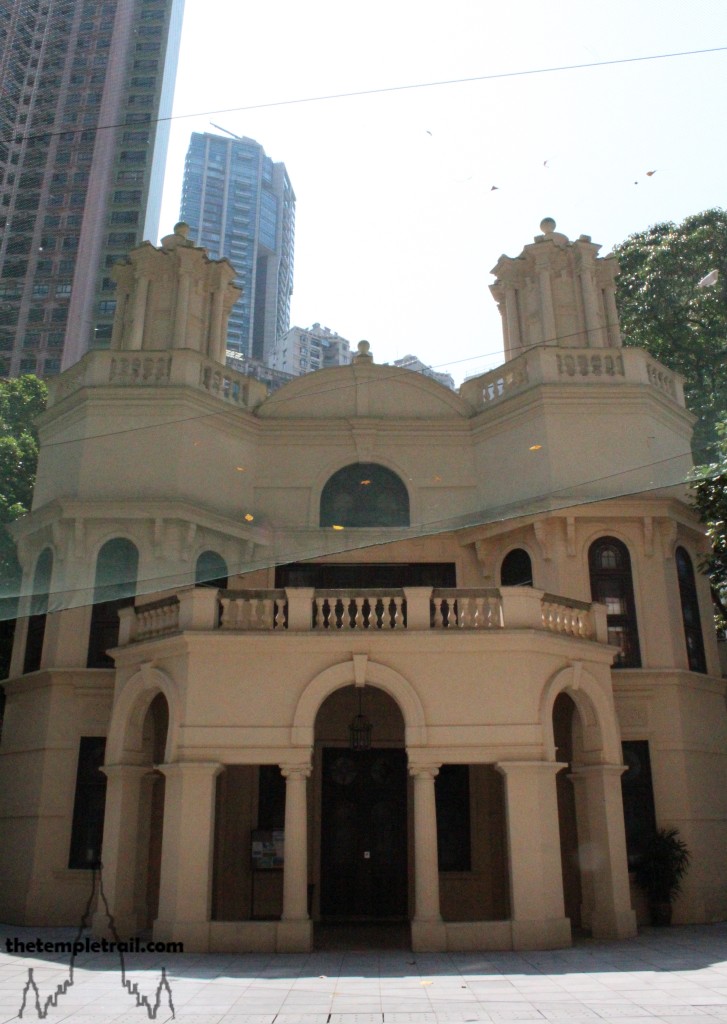
After the 1917 Russian revolution, Ashkenazi Jews started to arrive from Eastern Europe, diversifying the community. The synagogue became an extremely active and vibrant centre of worship in Hong Kong. The synagogue was slightly adapted over the early years and the façade was made more elaborate, the building clad in stucco and towers extended. During the Japanese occupation, the building was occupied by the Imperial Army and the Jews interned in Prisoner of War Camps. While the purpose of the building to the Japanese at that time is uncertain, the fact that it was used is likely what saved it from destruction. After the war and after the Communist take-over of China, more Jews came to Hong Kong. The community thrived. The synagogue had plenty of use, but by the 1980s it had become a hodge-podge of repair jobs and, with land stability issues, its future was debated. While the area around it was redeveloped, the decision was made to restore the synagogue and in 1997, work began. Revealed in 1998, the incredible and meticulous work done not only saved a cultural treasure, but also won the building a coveted UNESCO Outstanding Project Award for Cultural Heritage Conservation. The unique structure serves a community that draws from more than 17 countries and over 200 families.
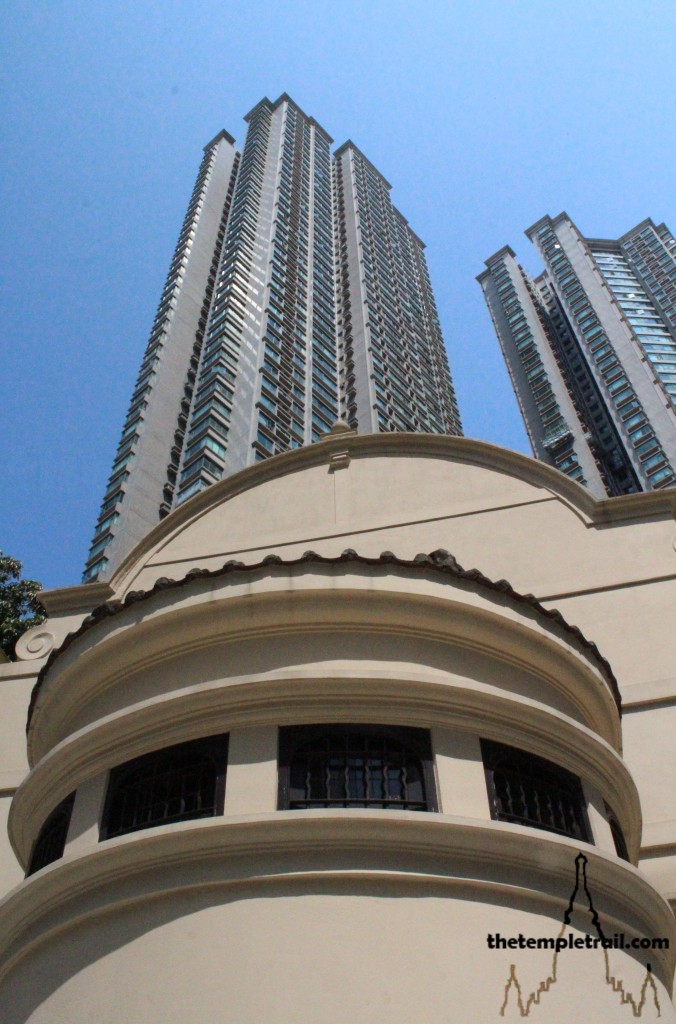
With the sun’s glare semi-blinding you, you take a tour around the outside of the synagogue. At the back, you find the foundation stone that was laid on the 7th of May 1901. Turning around, you see a wall inscribed with the name of the synagogue. Behind it, down a path is the ritual bath that is used at various times by the community. Returning to the front of the synagogue, you see how the light glints off the stucco. Under this is the original red brick, but during the restoration, the decision was taken not to reveal it, as it has been clad longer than it has been exposed. Stepping under the porch, you escape the sun’s rays and enter into the darkened interior. What you find is surprising and beautiful. You feel as if you have stepped into a time capsule.
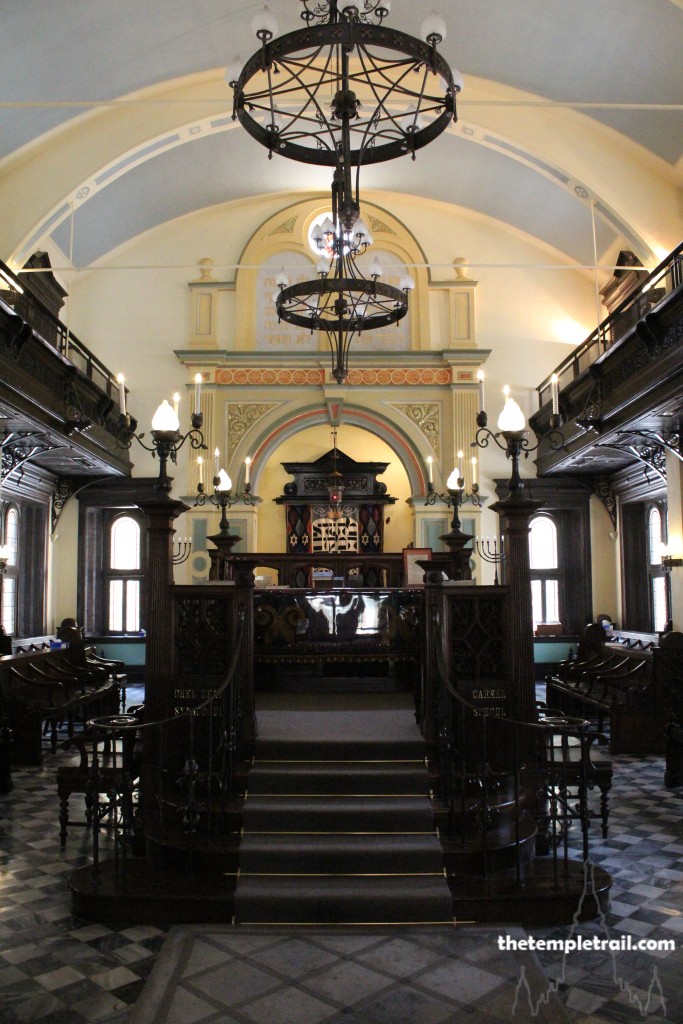
In the foyer, you see that the towers of the synagogue on either side of you have different purposes. To your left, one contains a stairway leading to the second floor, whereas the one on your right is the home of the library. The circular room is filled with books and standing in its centre, you feel enveloped by the combined written knowledge of thousands of years of Jewish history. From the room, you go back into the lobby and see two stone tablets, one above the other. The top one is the dedication stone. It says that the name of the synagogue is The Tent of Leah (Ohel Leah) and that it was built by Jacob Elias David Sassoon at his sole expense on land given by him and his brothers in honour of their mother Leah. The stone also states ‘This is a gate of the Lord into which the righteous shall enter’. The naming of the synagogue as a ‘tent’ shows how Jews refrain from using the word temple to describe holy structures other than the Temple in Jerusalem. Under the first stone is a later one, stylistically the same, called the Roll of Honour. The stone records the names of members of the Jewish community who lost their lives in the 1941 to 1945 defence of Hong Kong. It is interesting to note that both sexes are represented here, demonstrating how the community banded together, along with the others of Hong Kong to fight the Japanese invaders.
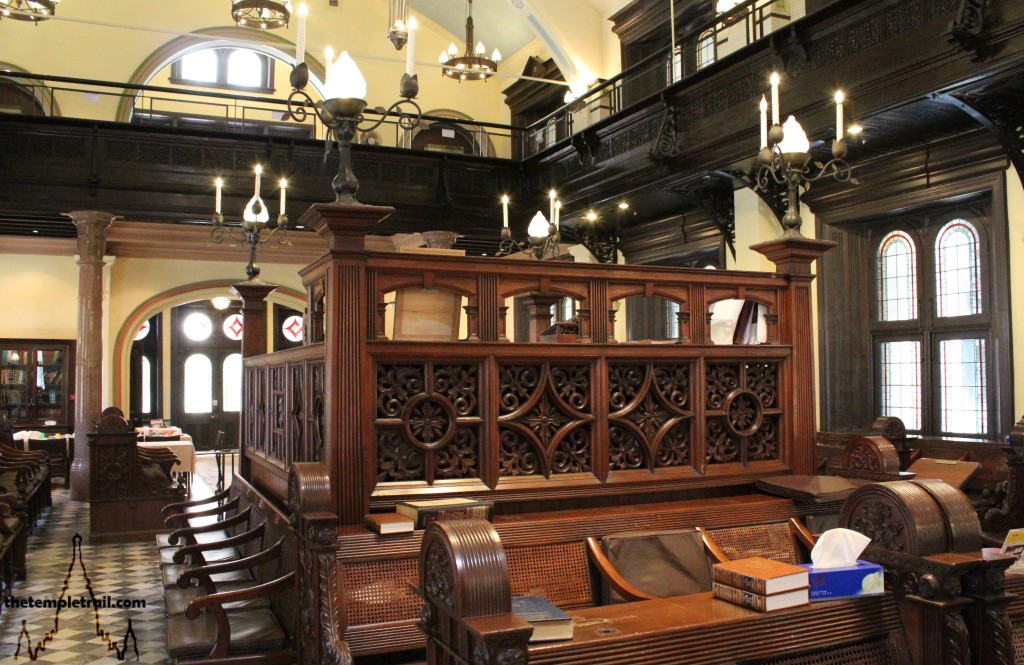
From the entrance area, you step into the main section of the synagogue. The dark tones of the wood and light paint on the walls define lines throughout the interior. You have the feeling of stepping into an older world. When the synagogue was restored, multiple layers of paint were found on its walls. This one was chosen, as it was one of the colours used over the years and best suited the hall in the opinions of those in charge. Seeing the cream colour for yourself, you can see why as it contrasts against the burnt umber of the woodwork. The whole chamber is beautifully lit by the light streaming through its stained windows. When some of the glass needed to be replaced, trouble was taken to source it from the same company that supplied it for the original construction. The care and attention paid during the restoration work resulted in a pristine award-winning building.
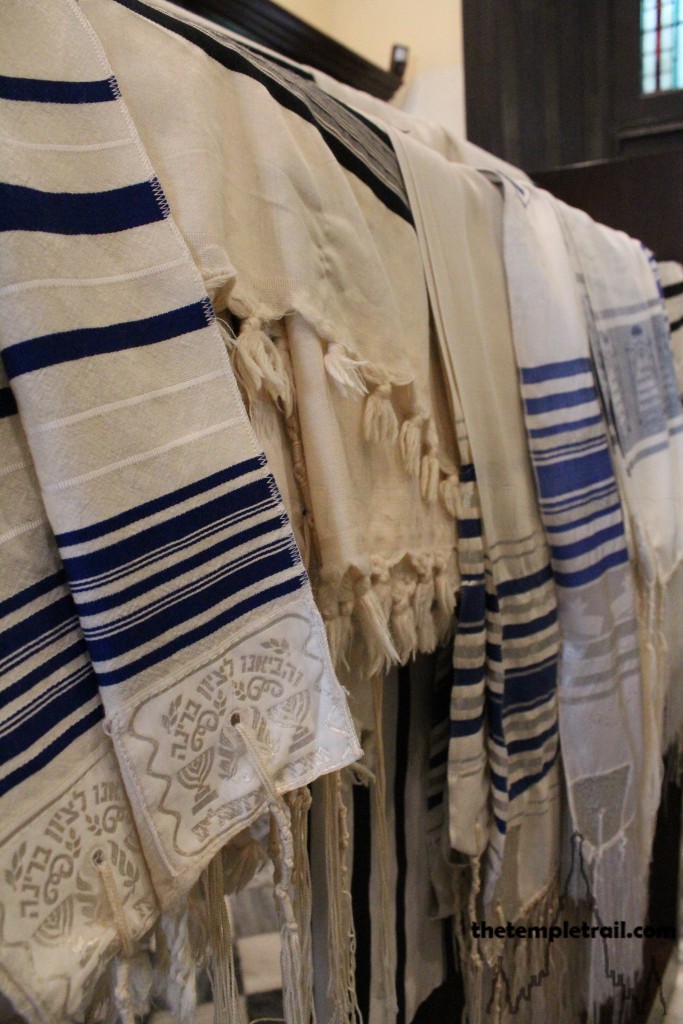
There is no absolutely strict lay out for a synagogue. Here, there is a central raised platform and one at the front. The seating is arranged around the central platform with some facing forward too. The seating around the periphery is common in Sephardi synagogues, whereas it normally faces forward in an Ashkenazi one. Walking into the space, you see a rack of shawls to the left. The white shawls are accented by blue or black, reflecting the colours of the checkerboard stone floor of the room. These shawls are called tallitot and the lack of plain white ones, used by Sephardi Jews, is telling. The Ashkenazi Jews use a black striped tallit and it is worn during tefillah (prayer times) along with a kippah (cap). Walking up to the row of chairs next to the tallitot, you note that there are cubby holes with lids built into them. In here, the Jewish men keep various item, but typically it is where they keep their tefillin. During Shacharit (morning prayer), the men wear leather boxes containing scrolls of parchment with verses from the Torah; these are called tefillin. The shel yad is worn on the arm and the shel rosh on the forehead. In order to hold any of the tefillah, a quorum of ten men, called a minyan, is required in Orthodox Judaism. The men at Ohel Leah normally use the same seats, so they keep their prayer items in their storage boxes.
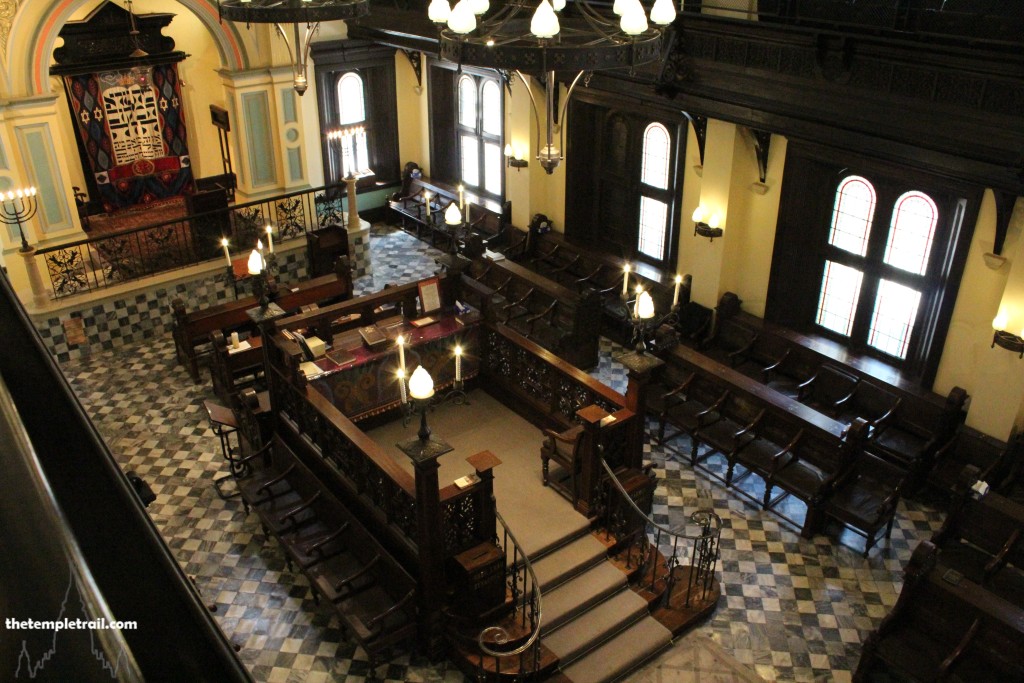
From the side, you approach the central platform. This is the bimah and it is used as a place from which to recite from the Torah, much like a pulpit. The raised platform acts to raise the status of the person reading from the holy scriptures, so that all around know that it is the most important act at that moment. Climbing the five steps that are enclosed with elegant scrolling iron handrails, you find yourself standing above the level of the congregation on the platform. From here, you have an unimpeded view of the room. The carved wood of the platform encases you and you move to the front of the bimah, facing the Torah Ark at the far end of the synagogue. Here, you see the reading table on which the Torah is placed during prayer times. On the surface is a set of yad (pointers) used during readings. The yad is a hand shaped pointer that is used when reciting from the Torah. As the Sefer Torah is hand written on parchment, the ink does not get absorbed and is easily smudged and the scroll damaged. If the Torah becomes damaged in any way, particularly by being handled, it is no longer kosher (pure).
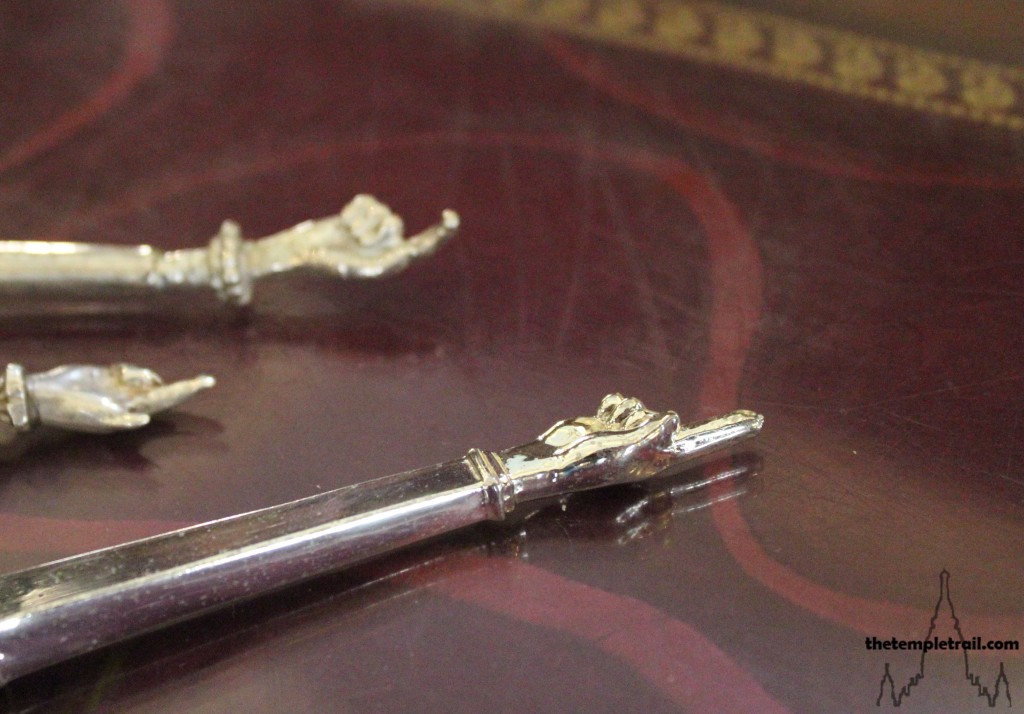
Stepping down from the platform, you make your way to the front and ascend another short set of steps. Next to the steps is a short column with a menorah on it. The menorah here is a seven branched candle stand, as opposed to the nine branch menorah used during Hanukkah, and it had a twin on the opposite side of the front dais. The menorah is a facsimile of the one made for the Tabernacle by Moses under instruction from God. The menorah is the symbol of Judaism and one of the most easily identifiable symbols in the world. The marble columns on which the menorah stand were revealed during the restoration and had been clad in wood for some unknown reason.
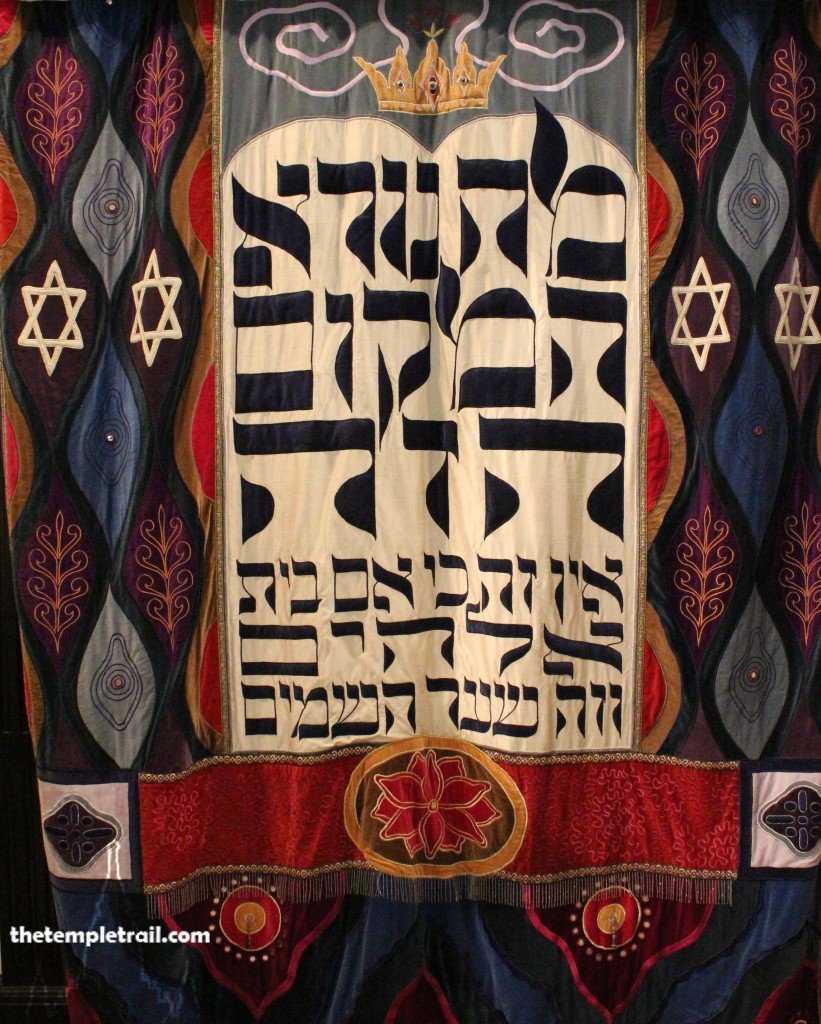
On the podium at the front, you now stand before a beautifully stitched curtain. Behind this curtain are wooden doors emblazoned with the Star of David. This is the Torah ark. Known as the Aron Kodesh by Ashkenazi Jews and as the Hekhál by Sephardi Jews, the large closet is the storage place of the Sifrei Torah of the synagogue. A Sefer Torah is a handwritten Torah scroll and the collection at Ohel Leah is impressive. The ark occupies the wall which is nearest Jerusalem and is air conditioned to keep the fragile scrolls from being damaged. Ohel Leah has a newly created Torah which is kept in an embossed silver case that shows all the signs of a master craftsman’s work. The collection of Torah is eclectic and various ones of unknown origin are kept here. Many are unusable due to damage and one was rescued from Cat Street thieves market many years ago. During the War, the scrolls were taken out of the synagogue and hidden from the Japanese. Where they went is still a mystery, but after the occupation was over, they were all returned.
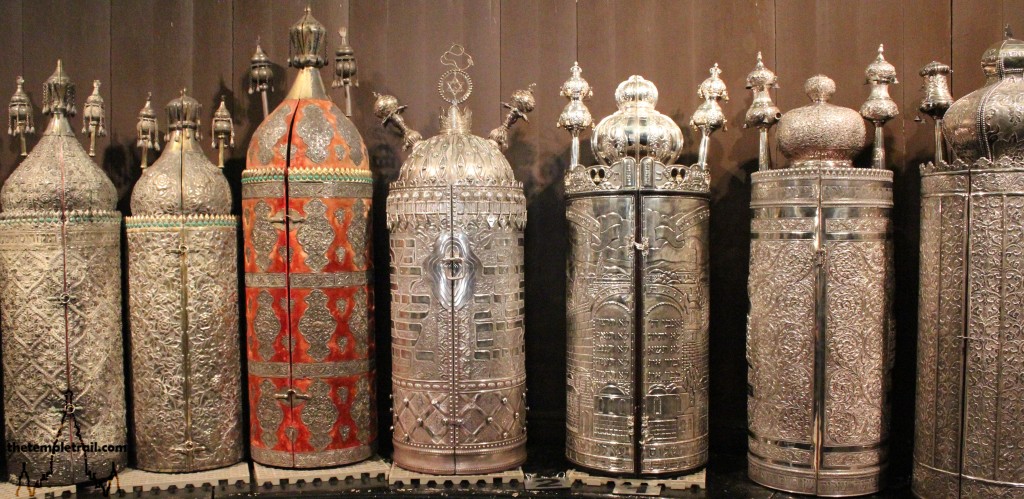
Above the platform on which you stand, inlaid into the wooden façade of the ark are two stone replicas of the ten commandment tablets brought down from Mount Sinai by Moses. Carved with Hebrew, the two stone tablets take a prominent place in the hall, so that all inside understand their importance. From the front, you make your way back to the entrance of the synagogue and climb the stairs up to the second floor. Up here, is the ladies seating. In an orthodox synagogue like Ohel Leah, the congregation is segregated. Children can sit in any area until they have their Bar Mitzvah or Bat Mitzvah. Although the synagogue is orthodox, it is a Modern Orthodox congregation. There are three other congregations in Hong Kong; Sephardic, Chabad Lubavitch and the United Jewish Congregation. These are not mutually exclusive and faithful can hold membership of more than one. While Ohel Leah serves its own congregation, the Jewish Community Centre is for all of the Jewish community.
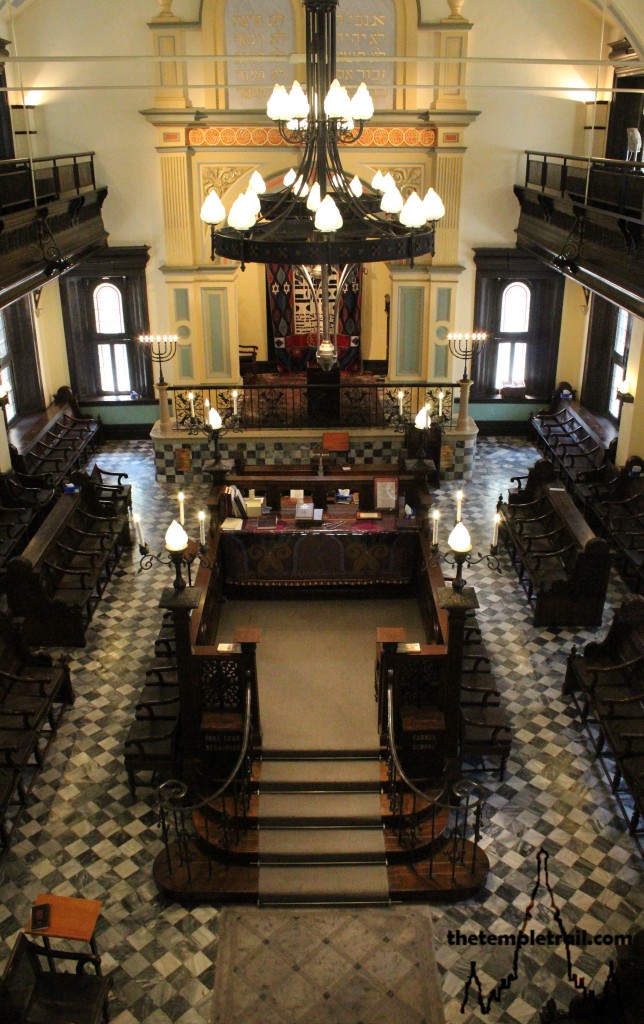
Exiting the synagogue and making your way back up to the road level, you look back at the old building in the shadow of the large tower. The Jews have had a long history in Hong Kong and their story is an interesting one. The newly restored synagogue should serve the community for generations to come thanks to the great work put in place by the current Jewish population. Their work built on that of those who came before and Ohel Leah really does tell the story of the Jews in Hong Kong, a community that has grown with the territory and adapted with its changes while remaining firmly anchored in their own traditions.
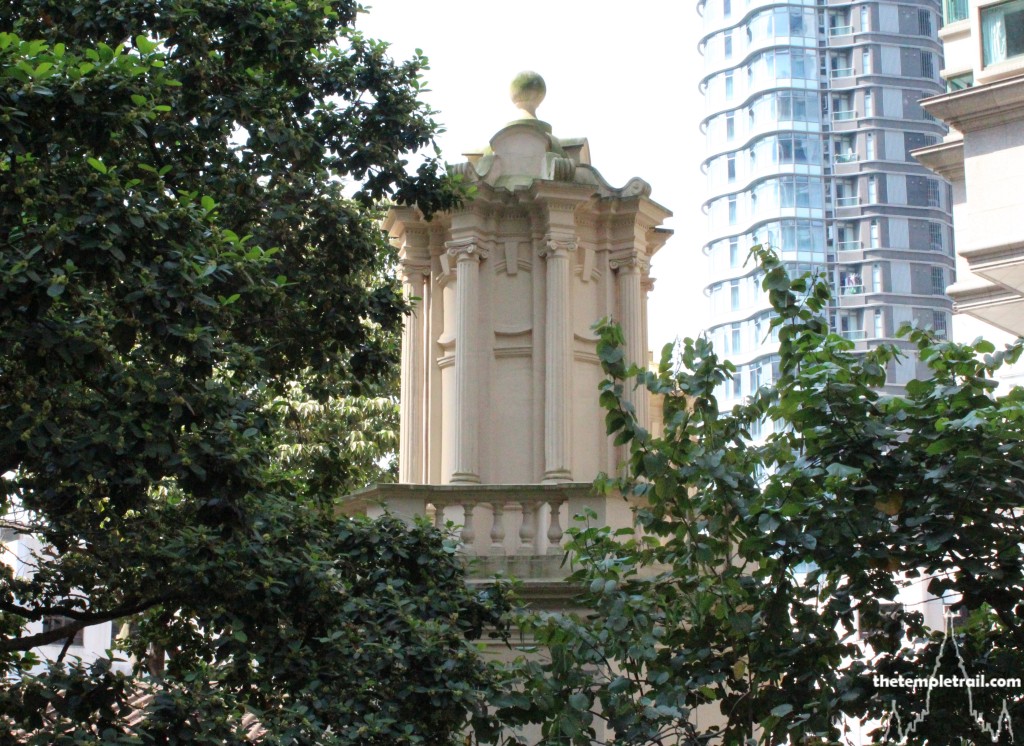
I would like to thank all at Ohel Leah who made it possible to share its story. Particularly to Rabbi Asher Oser, Pauline Ngan and the Trust Office. Also, a huge thank you to Erica Lyons for taking the time to show me around Ohel Leah and share its stories.
